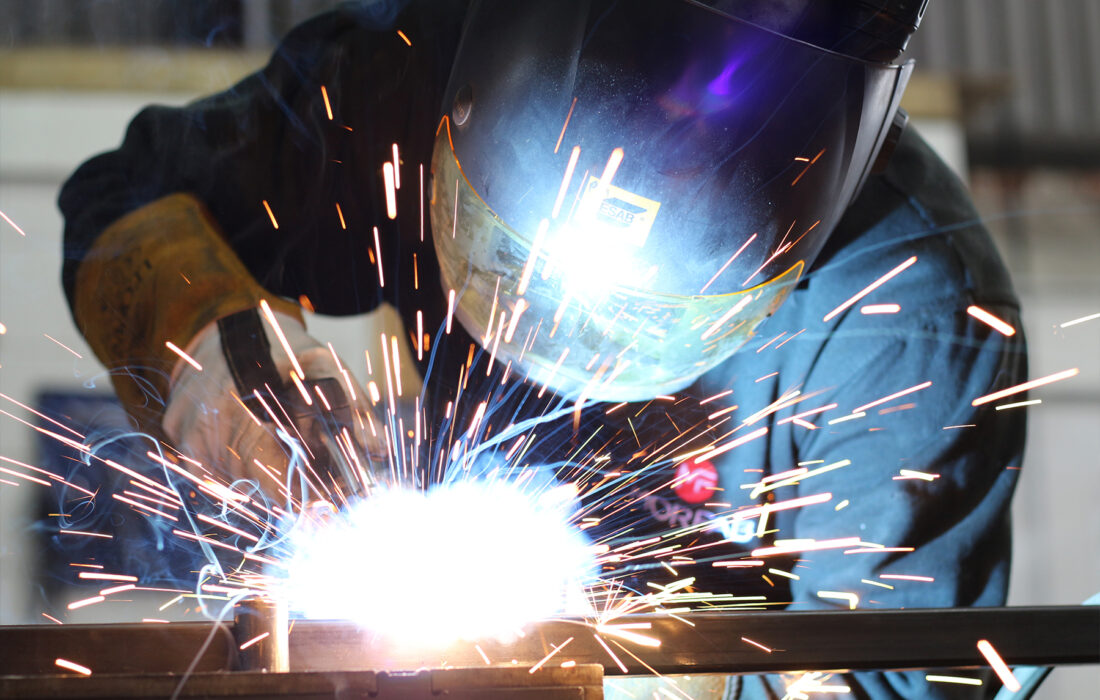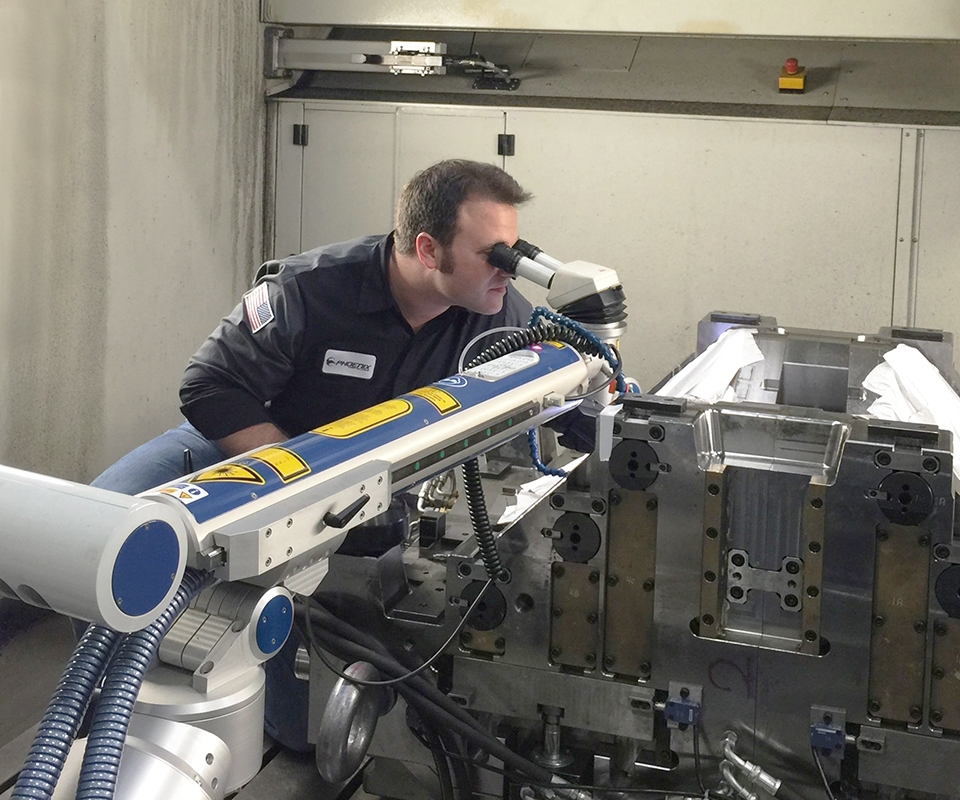Common weld defects Montana Mobile Welding and Repair Belgrade Welding helps eliminate
Wiki Article
Everything about Welding: Trick Insights Into Techniques and Ideal Practices for Success
Welding includes a range of methods, each fit for certain materials and applications. Comprehending these methods, such as GMAW, SMAW, and TIG, is vital for accomplishing optimal results. Furthermore, the appropriate tools and safety and security techniques can not be overlooked. As prep work and repairing play critical duties in the welding procedure, understanding these components can substantially boost the quality of the final item. What are the crucial aspects that assure a successful weld?Understanding Various Welding Methods
Welding techniques incorporate a variety of approaches, each fit to certain applications and products. Among the most common methods are Gas Steel Arc Welding (GMAW), Protected Steel Arc Welding (SMAW), and Tungsten Inert Gas Welding (TIG) GMAW, also known as MIG welding, is popular for its speed and flexibility, making it ideal for slim materials. SMAW, or stick welding, is favored for its simpleness and efficiency in exterior settings, specifically with thicker metals. TIG welding offers accuracy and control, making it suitable for complex job and non-ferrous metals (Montana Mobile Welding and Repair Welding). Each strategy has its unique advantages and factors to consider, allowing welders to pick the very best method based on the task's requirements, material kind, and wanted outcomes. Understanding these methods is crucial for effective weldingCrucial Welding Tools and Devices
While various welding strategies call for particular abilities, the appropriate tools and tools are equally crucial for accomplishing high quality results. Necessary welding tools includes welding equipments, which differ relying on the technique-- such as MIG, TIG, or stick welding. Protective gear, including helmets, aprons, and handwear covers, assurances safety and convenience during the process. Additionally, clamps and components assist protect materials in position, making sure accuracy in welds. Consumables like welding poles, wire, and shielding gas are also essential elements that affect the high quality of the weld. In addition, tools such as cutters and mills promote surface area prep work and post-weld finishing, adding to a professional outcome. Spending in premium equipment ultimately enhances the effectiveness and effectiveness of welding tasks.Safety And Security Practices in Welding
Appropriate safety methods are vital in the welding market to shield employees from prospective threats. Welders need to use appropriate personal safety devices (PPE), consisting of safety helmets with correct shading, gloves, and flame-resistant clothes. Appropriate air flow is vital to minimize direct exposure to harmful fumes and gases created during the welding process. In addition, employees ought to be educated in the correct handling of welding devices to prevent crashes. Fire precaution, such as maintaining combustible materials away from the welding location and having fire extinguishers conveniently available, are necessary. Routine inspections of devices and workspaces can aid identify possible risks before they result in crashes. By adhering to these security techniques, welders can create a much safer working environment and lessen threats related to their profession.Readying Materials for Welding
Preparing products for welding is an important step that greatly influences the high quality and honesty of the last product (Fabrication). Proper preparation involves cleaning up the surfaces to get rid of contaminants such as oil, dust, and corrosion, which can jeopardize the weld. Techniques such as grinding, fining sand, or making use of solvents are generally employed to achieve a clean surface. Furthermore, ensuring that the products fit with each other snugly is essential; voids can cause weak welds. It's also vital to take right into account the placement and positioning of the elements, as this will influence the simplicity of welding and the final end result. Lastly, selecting the ideal filler material and making certain compatibility with the base metals is vital for accomplishing strong, resilient weldsTips for Achieving High-Quality Welds
Attaining top notch welds requires attention to information and adherence to best methods throughout the welding procedure. Proper joint preparation is essential, making certain surface areas are clean and totally free from impurities. Picking the suitable filler material and welding strategy based upon the base steels is important for ideal bonding. Maintaining consistent travel speed and angle while welding can promote and protect against issues harmony. Additionally, managing warm input is crucial; too much heat can lead to warping and deteriorated joints. If necessary, regularly inspecting the welds throughout the procedure enables for prompt modifications. Utilizing appropriate post-weld therapies, such as cleaning and tension relief, can enhance the resilience and integrity of the weld, inevitably making sure a successful outcome.Troubleshooting Typical Welding Issues
Welding typically provides challenges that can influence the quality and integrity of the last product. Usual issues such as porosity, inconsistent weld grains, and overheating can arise, each requiring specific fixing methods. Understanding these issues is necessary for welders to boost their abilities and achieve perfect results.Porosity Problems Described
Although porosity can commonly be overlooked, it remains an essential issue in welding that can endanger the integrity of a completed product. Porosity describes the presence of small gas pockets within the weld bead, which can lead and compromise the joint to early failing. This problem normally occurs from pollutants, dampness, or incorrect securing gas insurance coverage throughout the welding procedure. To alleviate porosity, welders should verify that the base products are completely welding steel dry and tidy, use proper shielding gases, and preserve consistent welding criteria. On a regular basis examining the tools and environment can also aid identify potential problems prior to they manifest in the weld. Dealing with porosity efficiently is vital for accomplishing strong, resilient welds that meet quality standards.
Irregular Weld Beads
Irregular weld beads can significantly affect the quality and toughness of a finished product. Different factors add to this concern, consisting of improper travel speed, wrong amperage settings, and inconsistent electrode angles. When the welder moves as well rapidly, a grain may appear slim and lack penetration, while relocating as well slowly can cause too much build-up. Furthermore, using the incorrect amperage can lead to either damaging or extreme spatter, both of which concession weld integrity. The welder's technique, such as inconsistent torch movement, can likewise bring about unequal grain appearance. To minimize these troubles, welders need to concentrate on preserving consistent, controlled motions and guaranteeing appropriate tools setups to attain harmony in their welds. Uniformity is key to accomplishing reputable and solid welds.Overheating and Warping Issues
Too much warmth throughout the welding procedure can bring about substantial getting too hot and deforming issues, impacting the architectural stability of the work surface. These troubles typically materialize as distortion, which can endanger placement and fit-up, making further setting up challenging. Elements adding to overheating include the choice of welding parameters, such as voltage and take a trip speed, as well as the kind of material being welded. To alleviate these issues, welders ought to preserve constant travel speed and ideal warm input while keeping an eye on the work surface temperature. Additionally, preheating or post-weld heat treatment can aid reduce anxieties triggered by fast cooling - Fabrication. Routine examination and adherence to finest practices are essential in stopping getting too hot and guaranteeing the long life and reliability of welded frameworksFrequently Asked Concerns
What Are the Profession Opportunities in the Welding Sector?
The welding market offers read diverse job possibilities, consisting of settings as welders, engineers, inspectors, and instructors. Experts can operate in production, construction, aerospace, and automotive sectors, taking advantage of solid demand and competitive incomes in various duties.How Can I Boost My Welding Rate Without Giving Up High Quality?
To enhance welding speed without compromising high quality, one need to exercise efficient methods, preserve devices, maximize setups, and improve hand-eye control. Normal training and looking for feedback can additionally considerably add to attaining faster, high-grade welds.What Certifications Are Offered for Welders?
Many qualifications exist for welders, consisting visit our website of those from the American Welding Culture (AWS), the National Facility for Construction Education and Research (NCCER), and numerous industry-specific organizations. These qualifications boost employability and demonstrate skill effectiveness.How Does Welding Impact the Residences of Metals?
Welding affects the residential or commercial properties of metals by modifying their microstructure, which can result in modifications in strength, ductility, and firmness. Warm input and cooling prices during the procedure substantially influence these product qualities.Can I Bonded Dissimilar Metals Together?

Report this wiki page